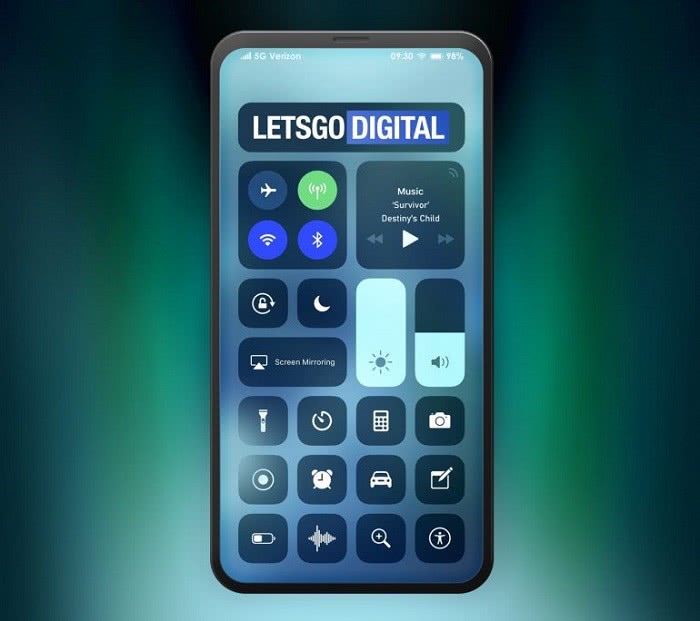The shape of the iPhone urgently needs to be changed to give users a sense of freshness and stimulate sales.
Editor’s note: This article comes from Tencent Technology , author Silicon Valley Analysis Lion.
According to foreign media reports, Apple will soon use the under-screen fingerprint technology on the iPhone, and this will also cause changes in the design of the iPhone. In short, the application of the under-screen fingerprint will allow Apple to bring true full-screen design. IPhone.
The report mentions that a new Apple patent details how a device with an OLED screen can provide touch ID-like functionality at any point on the display’s active area. US Patent No. 10,541,280 shows that this organic light emitting diode (OLED) display can perform optical touch sensing and user identification.
Apple said that the touch screen may include a touch sensor and a display device partially or entirely behind the touch sensor so that the touch-sensitive surface can cover at least a part of the active area of the display device. The patent states that OLEDs have clear advantages. For example, OLEDs can provide flat or flexible displays in a relatively thin package, making them suitable for a variety of portable electronic devices.
Also, OLED displays can display brighter, more vivid images in thinner and lighter packages than LCD displays, making them suitable for use in compact portable electronic devices.
Patents describe how to identify users or other objects “based on their optical characteristics.” For example, the absorption band of water is about 1700 nm, while the absorption band of finger objects is about 1000-1500 nm. In some examples, water and objects may have different spectral fingerprints, which may include the entire wavelength spectral absorbance or reflection value. Based on the frequency of reflected light or spectral fingerprints detected by multiple OLEDs, a processor or controller can determine the type of object.
The touch screen may include a spatial filter configured to focus light emitted from the OLED and / or reflected light detected by the OLED to improve optical touch sensing. The emitted light can reflect the hovering of objects such as fingers near the touch screen or the touch screen. Therefore, in addition to identifying users, this system can also interpret hovering actions.
This is not the first time Apple has applied for a full-screen Touch ID patent. Previous applications include the use of acoustic imaging for recognition.
In fact, before that, the industry chain said that Apple was preparing a special iPhone, which was special in appearance, that is, canceled Liu Haier and replaced the fingerprint on the screen. For Apple’s use of under-screen fingerprint technology, many industry analysts bluntly stated that this should not be a surprise. After using this technology first, Apple can eliminate the annoyanceHuman bangs screen, mobile phone screen ratio is higher, and the shape of the iPhone also needs to be changed urgently (in the next few years, the industry chain can not achieve some sensors such as the front camera embedded below the screen without sacrificing the experience) Let users have a fresh feeling and stimulate the increase in sales.
Famous analyst Ming-Chi Kuo mentioned in the report that Apple will launch an iPhone with an under-screen fingerprint version, and they have been testing under-screen fingerprint technology before.
Guo Mingming pointed out that Apple hopes that Face ID (face recognition) and under-screen fingerprint technology are complementary. The two are not competing and replacing each other. Multiple biometrics are expected to strengthen security, while under-screen fingerprints can be used in specific situations. Provide more convenient authentication.

It is worth mentioning that Apple has applied for three well-known design patents in Japan, showing the iPhone style without bangs. The document was published by the Japanese Patent Office (JPO) on December 23, 2019. The picture shows that while removing Face ID, the new iPhone also integrates an under-screen fingerprint and an under-screen camera.
In addition, the four edges of the iPhone screen without bangs are somewhat rounded (similar to the iPhone 8), and the receiver is located in the middle of the upper bezel. The key layout continues the iPhone 11’s style, such as the volume and mute switch on the left, but there is a slender multi-function button on the right.